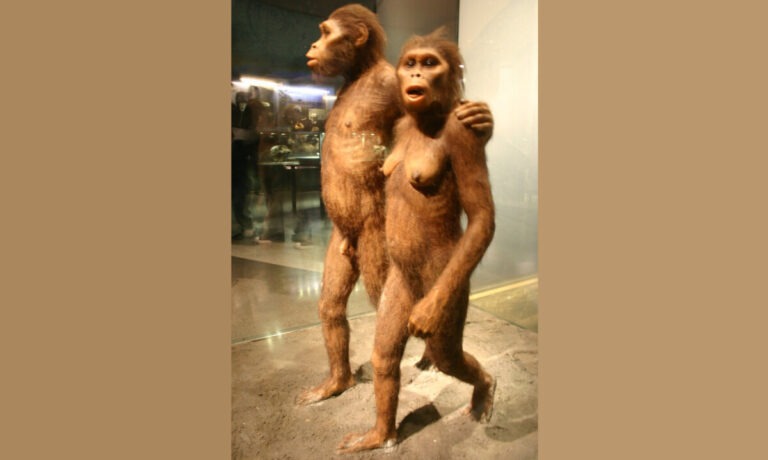This genus is more directly ancestral to humans and includes several species, such as Australopithecus afarensis (famously represented by “Lucy”), Australopithecus africanus, and others. Australopithecines show a greater commitment to bipedalism and have features more closely resembling modern humans, although they still retained some adaptations for climbing.
This genus is known for their true bipedalism, enhanced predator awareness, and facilitated tool use by freeing the hands. These hominins exhibited significant dental evolution, with smaller, less pronounced canines indicative of dietary changes and reduced aggression, suggesting more complex social interactions. Their brains, though only modestly larger than those of great apes, showed gradual increases in size, hinting at evolving cognitive abilities.
Survival: From about 4.2 to 2 MYA in Eastern and Southern Africa (in woodlands and grasslands)
Size: 3’6″ to 4’6″ (a bit taller than modern chimpanzees)
Brain Size: around 350 to 550 cm³ (speculative)
Brain to Body EQ: 2.5 to 3.5 (humans=7.4 to 7.8)
Species: Australopithecus anamensis (around 4.2 to 3.9 million years ago), Australopithecus afarensis (famous for the “Lucy” specimen, around 3.9 to 2.9 million years ago), and others.











